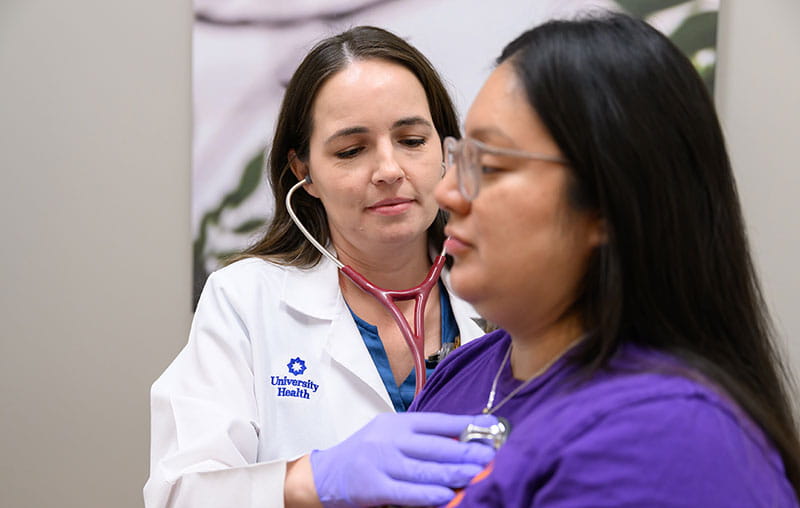Every year, thousands of Americans are diagnosed with primary liver cancers (cancer that starts in the liver), and a significant number develop liver cancer that spread from colorectal cancer. Surgical removal alone or in combination with other methods is a major part of treatment.
Compared to open surgery, patients with liver cancer who undergo minimally invasive surgery experience less pain, complications and blood loss, along with a shorter hospital stay and faster recovery. Recently, surgeons have been using robotic technology to perform minimally invasive liver surgery, adding even more benefits for patients.
“With the help of the robotics platform, we are operating with more precision, which means less blood loss, less leakages, and, from my experience, we don't have to take more liver than what is needed,” said Dr. Tarunjeet Klair, an abdominal organ transplant and hepatobiliary surgeon at University Health. “Our experience level and the complexity of the cases that we can undertake with this technology has been increasing over the years.”
How Robotic Surgery Works
Partial hepatectomy, also known as liver resection, is a surgery to remove part of the liver. Along with liver transplant, which can be an option for those with tumors that cannot be removed with surgery, partial hepatectomy offers the potential to treat primary or metastatic tumors of the liver. The tumor, along with some of the healthy tissue around it, is removed. The remaining liver tissue takes over the functions of the original organ and may regrow.
The procedure can be performed by open, laparoscopic or robotic surgery.
Open partial hepatectomy requires one long incision to access the abdominal cavity.
Laparoscopic and robotic partial hepatectomy, on the other hand, use several small incisions. In laparoscopic surgery, a wand-like camera called a laparoscope and long instruments are passed through these incisions to remove the resected liver.
During a robotic procedure, the surgeon sits at a console next to the patient and operates through small incisions using tiny, wristed instruments. The system translates every hand movement from the surgeon in real time with far greater precision, accuracy, and range of motion. While traditional laparoscopic cameras are only 2D, robotic systems come equipped with a magnified, high-definition 3D camera to optimize the view of the surgical area.
“Every movement of the robotic arms is 100% controlled by the surgeon, and the robotic platform only helps us to do the surgery better,” Dr. Klair said. “The 3D visualization, the advanced instrumentation, and the enhanced precision allows us to do this surgery at a very high level.”
Benefits for Both Patients and Surgeons
Robotic surgery for liver cancer has multiple advantages for both patients and surgeons. Compared to laparoscopic liver surgery, studies have found improved overall survival, less blood loss and lower readmission rates for robotic liver surgery. Patients who underwent robotic liver resection also had a shorter hospital length of stay, less admissions to the intensive care unit and lower incidence of post-operative liver failure than those who had open surgery.
“One of the biggest advantages for the surgeon is that the robotics platform allows us to perform the surgery like we do open surgery,” Dr. Klair said. “We can replicate the open technique without making an open incision.”
In addition to the enhanced views, accuracy and precision, surgeons enjoy a more comfortable experience while sitting at the robotic platform instead of standing on their feet for hours. It helps to reduce both mental and physical fatigue, enabling greater focus for longer periods of time.
Liver Cancer Care at University Health
Not every patient will be a candidate for robotic surgery, and eligibility is determined by tumor location, liver health and other medical conditions. However, an increasing number of patients are being offered robotic surgery to treat their liver cancer.
University Health has been performing robotic liver surgery since 2019 with the state-of-the-art da Vinci® Robotic Surgical System. Learn more about our full range of services for patients with cancerous and non-cancerous liver tumors at the Texas Liver Tumor Center.





